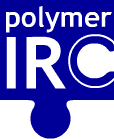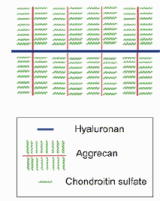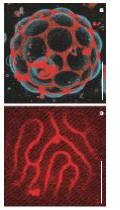
|
Bio-related systemsCo-ordinated research across the IRC is currently focussed on biomimetic polyelectrolyte combs and the cell/hydrogel interface: Biomimetic Polyelectrolyte Combs
Polyelectrolyte combs are charged polymers with a bottle-brush architecture, and although they are widely distributed in biology their unique physical properties are poorly understood. In this project, mimics of naturally occurring branched polyelectrolytes will be prepared, characterised and their properties modelled. Mimics of two important naturally occurring polyelectrolyte combs will be designed: the aggrecan-hyaluronan complex and porcine gastric mucin. Mimics of the aggrecan-hyaluronan complex will be synthesised using a variety of controlled polymerisation methods and mucin mimics will be made by glycosylation of synthetic peptide fragments. Characterisation of the branched charged polysaccharides will involve a suite of high resolution non-invasive techniques. The pHinduced self-assembly of the mucin combs into super-branched structures will be examined, and compared with natural mucin. The dynamics and rheological response of these materials can be modelled from a coarsegrained (freely jointed or wormlike chain) point of view, as can the linear and non-linear response and evolution of structure in flow. The close collaboration between theory, synthesis, and characterisation will permit a systematic exploration of their properties and applications. More information on the biological background to this topic - see Science of Hyaluronan Today (web-journal link). The cell/hydrogel interfaceIn this project we aim to understand the fundamental processes involved in the adhesion of cells to hydrogel surfaces. Hydrogels and amphiphilic networks have been used in life science applications for some time, however a useful system-based framework that describes effectively the performance of these materials remains elusive. This would allow rapid design of medical and pharmaceutical devices for use in life science applications.
Well-defined hydrogels presenting either functional or non-functional surfaces, with varying structural and mechanical features, will be prepared and their adhesion to different cell types will be studied. The features of the membranes to be investigated are: the requirement (or not) of binding epitopes for cellular adhesion and function; hydrophobicity/hydrophilicity; surface roughness; phase segregation (and the average length scale of domains); micro/meso-scale patterning. The synthesis of hydroxy-functional telechelic oligomers will beachieved using controlled polymerisation of functional monomers. Combinations of the resulting oligomers and their cross-linking using polyfunctional isocyanates will allow the production of sets of hydrogels/amphiphilic networks in which compositional space will be known and varied in a rational manner. The hydrogels will be characterised fully and their structure quantified with small angle neutron/X-ray scattering. The materials will be examined for biological perfomance using cell culture facilities in Sheffield. The static and dynamic behaviour of the bulk materials in terms of chain configuration and dynamics can be related to the behaviour of the surfaces with regard to friction and adhesion. The adhesion process involves mechanical attachment of a membrane (cell) to a network (hydrogel), this can be modelled by an inhomogeneous network in solution, where surface properties crossover to the bulk within a penetration length determined by the method of preparation. |
|
|
|
|
© The Polymer IRC 2004, design www.cookandkaye.co.uk /
Webmaster /
Disclaimer /
Privacy The IRC includes the University of Bradford, the University of Durham, the University of Leeds and the University of Sheffield. | |

